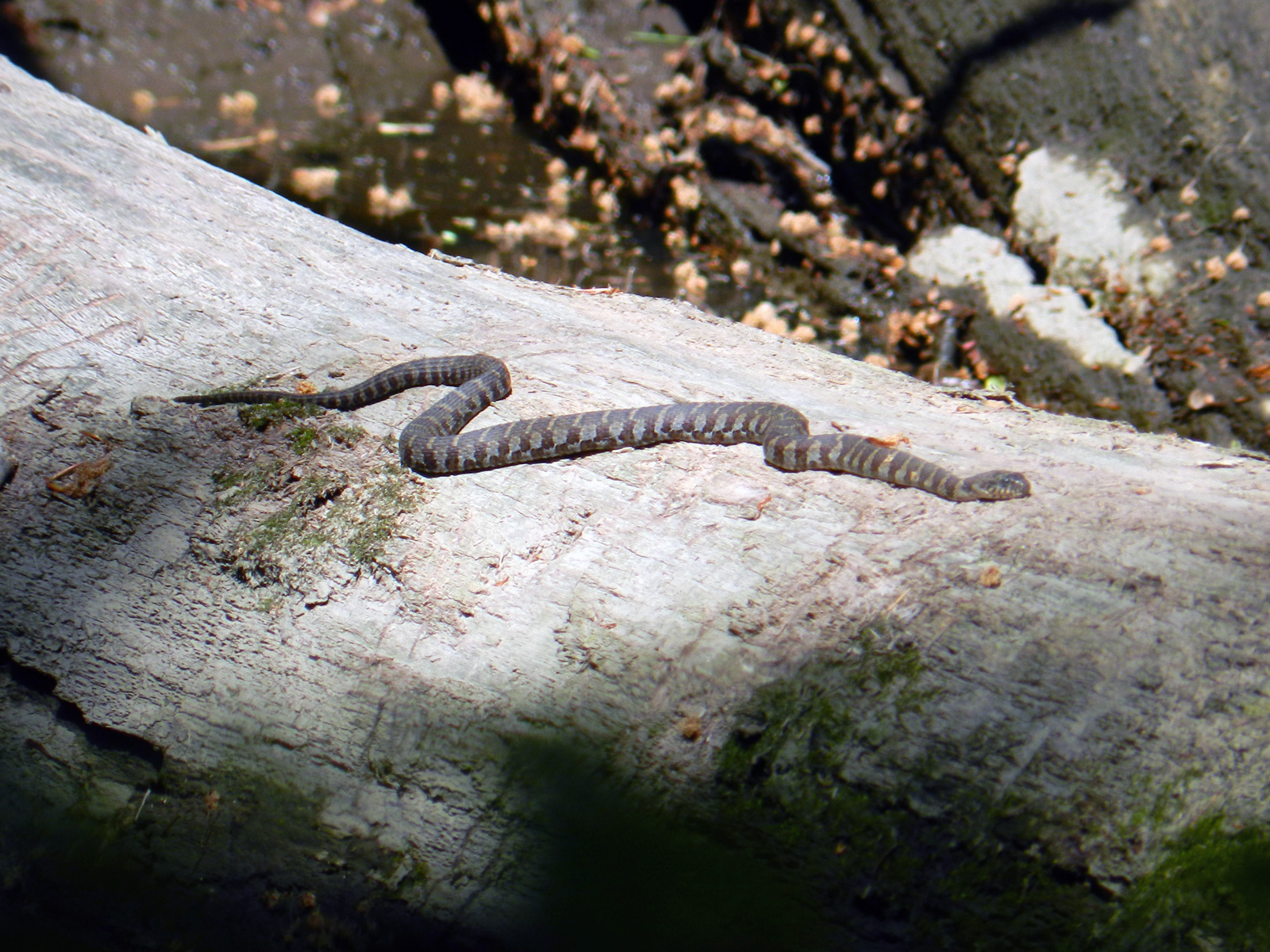 “Maybe we’ll see a snake today,” I said as we entered the woods. A short time later, we encountered some other hikers coming toward us on the trail who said they’d just seen a snake on a fallen tree over the river. The snake was still there when we got to the log. I photographed it from the bank. The creature was probably about three feet long.
“Maybe we’ll see a snake today,” I said as we entered the woods. A short time later, we encountered some other hikers coming toward us on the trail who said they’d just seen a snake on a fallen tree over the river. The snake was still there when we got to the log. I photographed it from the bank. The creature was probably about three feet long.
Later, I found out that it was a Northern Water Snake (thanks to a video segment from “60-Second Snakes“). Like every other snake in Michigan (except the seldom-seen rattlesnake, which has diamonds on its back), this one is harmless. I was at quite a distance from the snake, so I managed to stay still and get a few clear pictures. The water snake can be identified by its behavior (it tends to hang out by the water) and by its distinctive brown and grey bands.
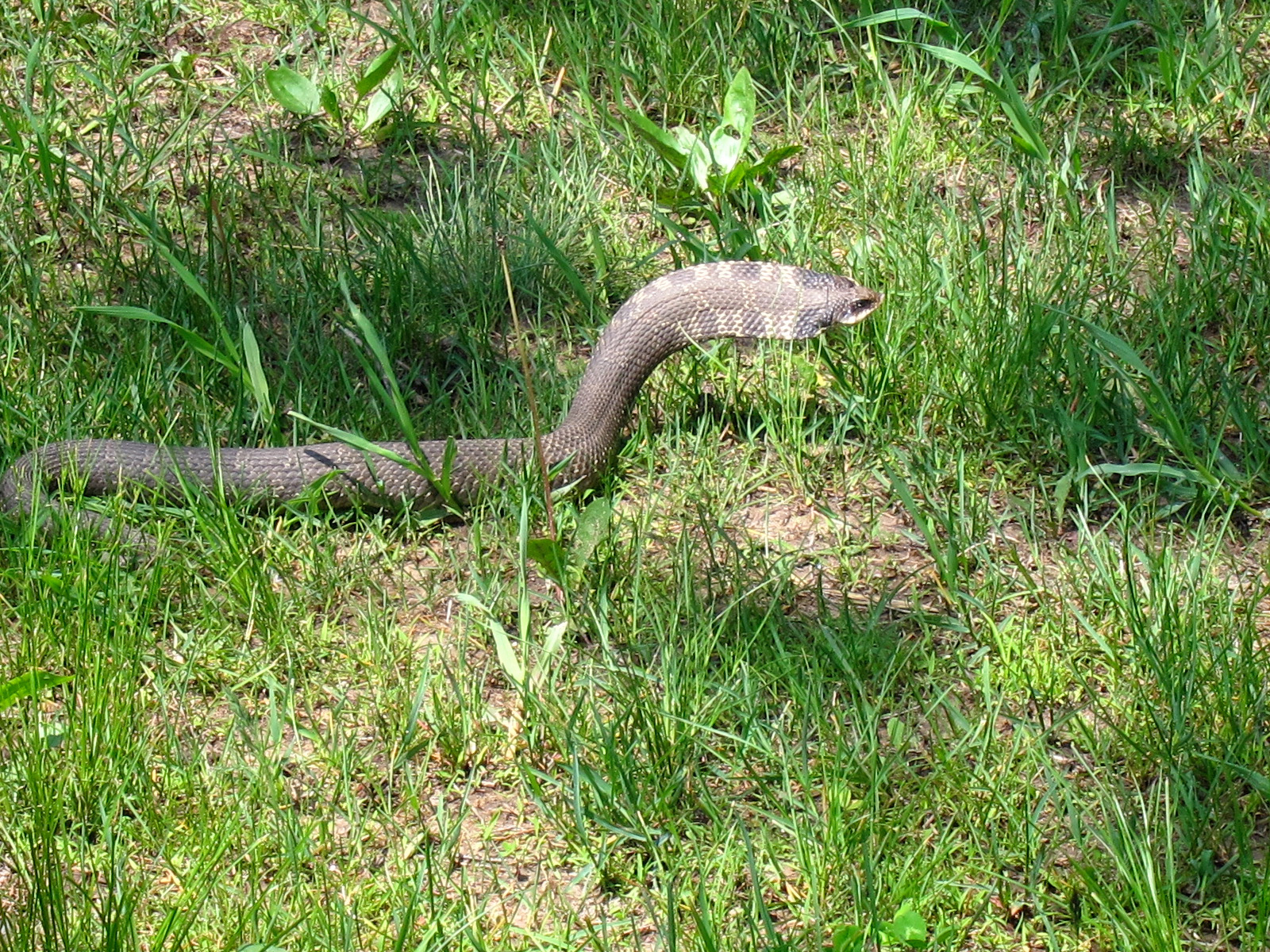 It’s quite different when one encounters a snake unexpectedly on a trail. Back in 2009, I nearly stepped on a large grey snake curled up sleep on a grassy trail. Only several years later, when I saw a similar snake in the same park, did I learn that it was an Eastern hognose. This snake, also known as a puff adder, has several distinctive features, the main one being that, when it is startled, it responds by imitating a cobra. Its head fans out and the snake hisses. It will even bite but the venom isn’t harmful to humans. So try to stay calm if you see one.
It’s quite different when one encounters a snake unexpectedly on a trail. Back in 2009, I nearly stepped on a large grey snake curled up sleep on a grassy trail. Only several years later, when I saw a similar snake in the same park, did I learn that it was an Eastern hognose. This snake, also known as a puff adder, has several distinctive features, the main one being that, when it is startled, it responds by imitating a cobra. Its head fans out and the snake hisses. It will even bite but the venom isn’t harmful to humans. So try to stay calm if you see one.
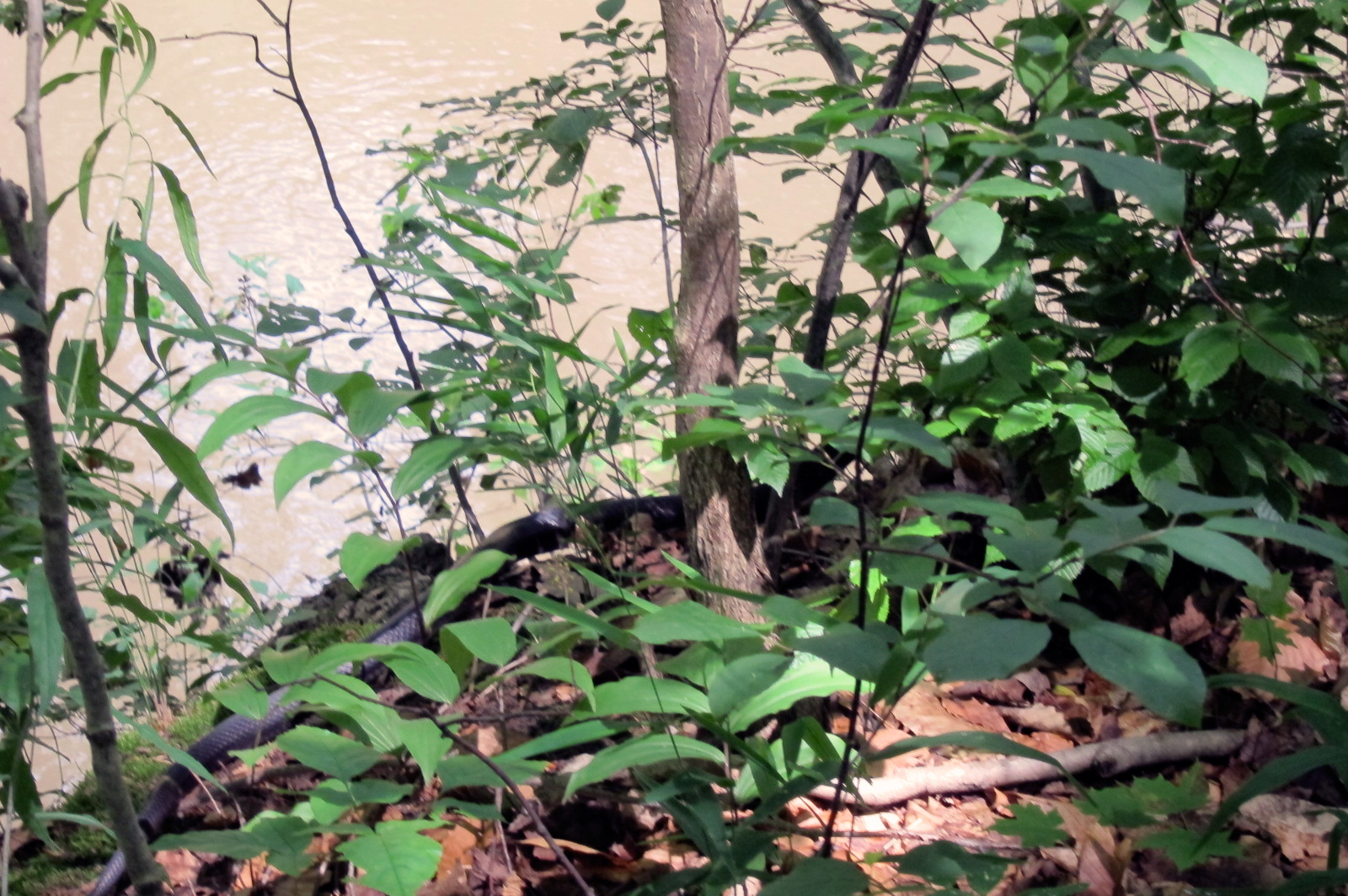
The black rat snake is another one likely to be found on a trail. This snake is imposing because it can be up to eight feet long. And when it sees a human, it is unlikely to move away. Instead it acts very lazy or may stay completely still, leading to an awkward standoff. In this case, the snake moved eventually and slithered off into the woods, where it could easily have passed for a length of ordinary garden hose.
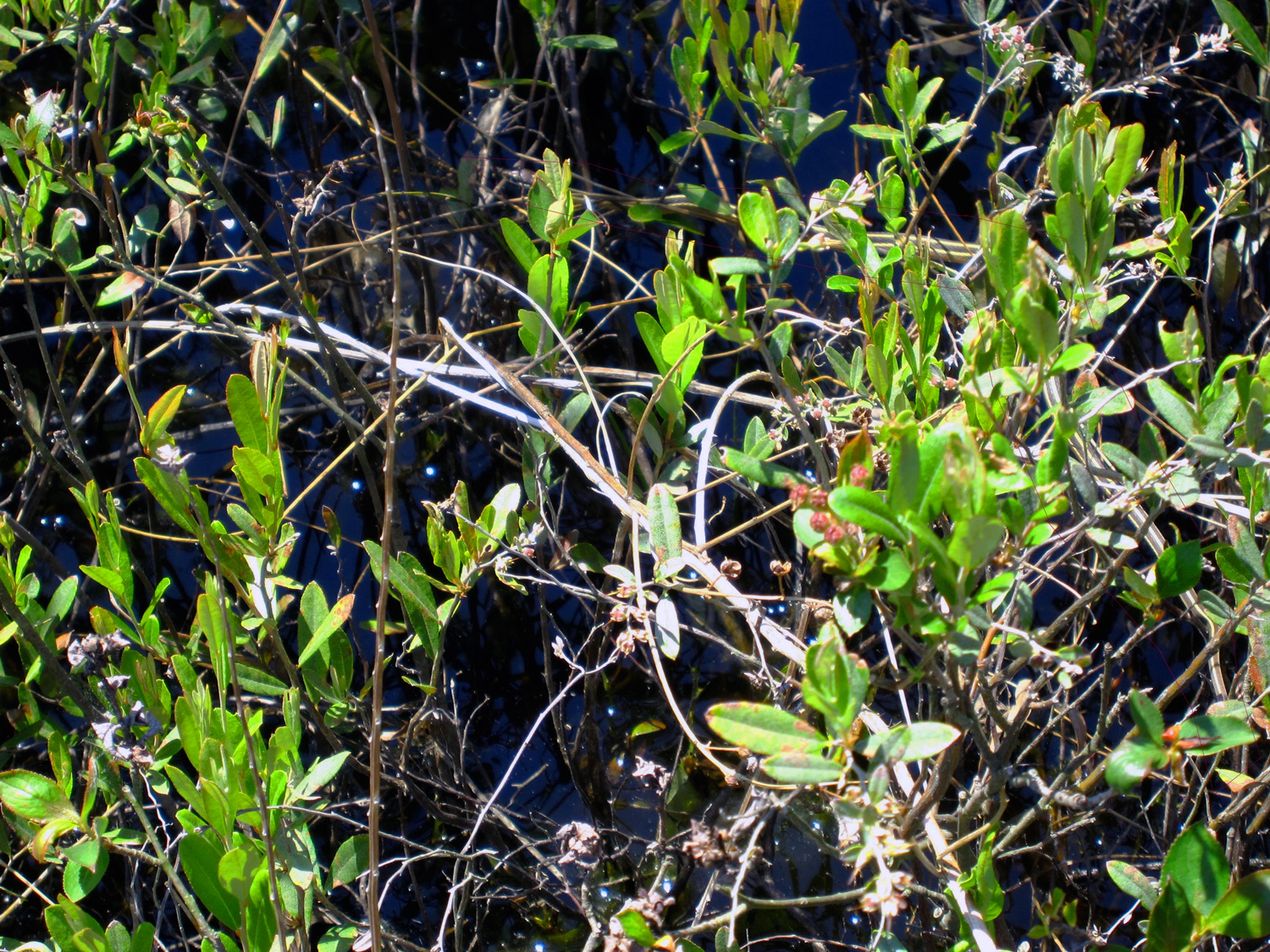
For the most part, snakes go unnoticed, and that’s how it should be. Their numbers are in decline because humans who do happen to see them often panic and destroy them. Sometimes seeing a snake verges on the miraculous, as here where a ribbon snake slithers through a bog. Look closely at the upper-right quadrant for a glimpse of its distinctive yellow and black stripes, its body an upside-down and backward L.
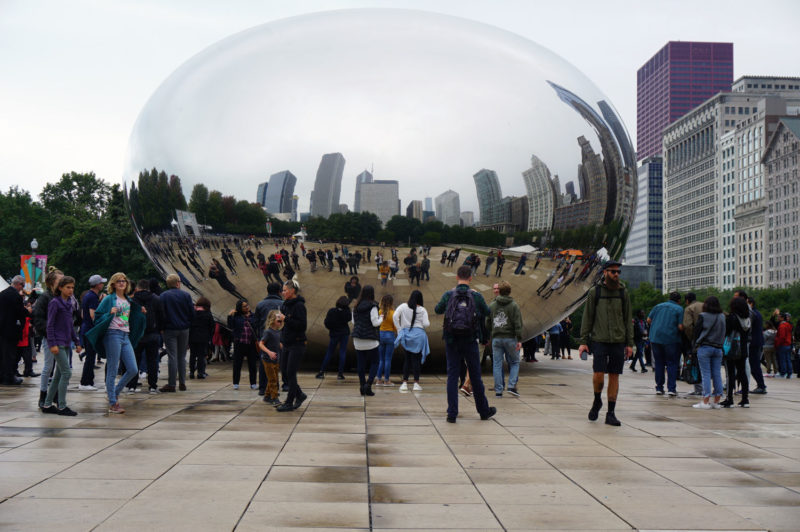
Sam Dune says
Gee, those are some really good photos of snakes in the wild ! Your captions are well-written and clear. . . . Yes, that ribbon snake in the last photo was hard to see. I looked and looked for a while and still didn’t see it until I read the caption and, indeed, there it was, so very camouflaged. . . . That was a good sighting. . . . Thanks for sharing this post.
Celia says
Thank you, Sam. There is nothing like seeing animals in the wild.